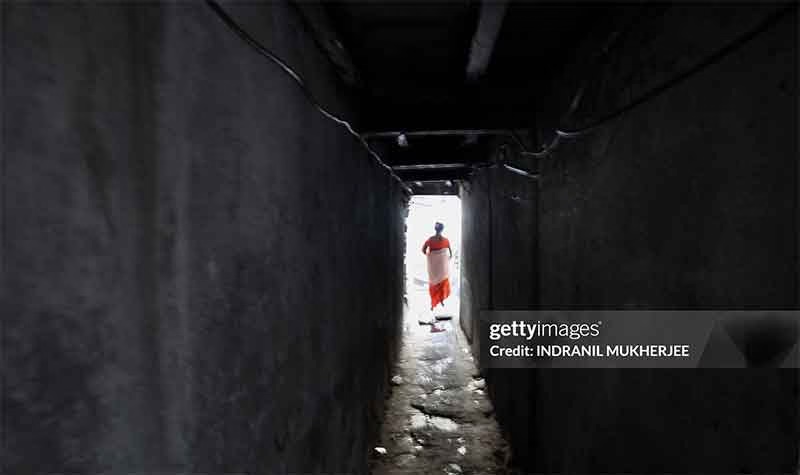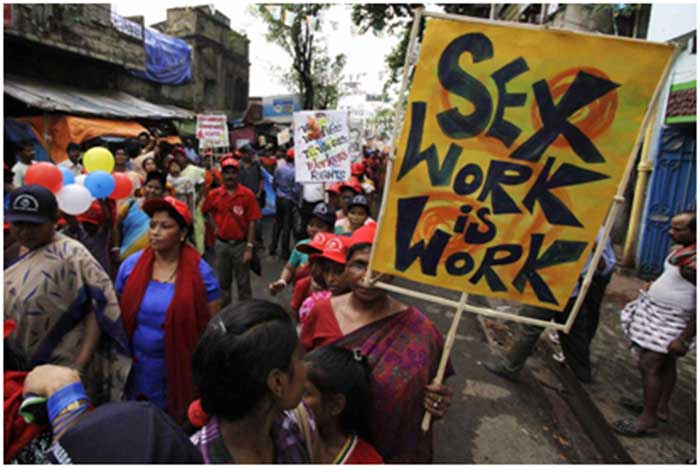
In many cities, where trains stop and people travel, there is a hidden map — one not shown on tourist brochures or official plans. Just outside train stations, behind busy bus stands, or next to clock towers, another kind of place quietly exists: red-light areas. These are places where sex work happens, often unnoticed by the everyday city. Their closeness to travel hubs is not by chance. It tells us something important about how cities work — how they try to control sex, hide it, and yet depend on it.
This article argues that red-light districts near stations are not just there because of low rent or social stigma. They are the result of a deeper logic — how cities, especially under colonial rule, planned space to keep “undesirable” activities in certain places. French philosopher Michel Foucault called such spaces “heterotopias” — areas cut off from everyday life, where things like sex, sickness, or punishment could be contained and controlled.
Stations as Strange Waiting Rooms
A railway station is not just a place to catch a train — it is a place where people are briefly free from their usual identities. When someone travels, they leave behind the rules of home, caste, and family. A man arriving alone from a village or a soldier resting for a night becomes someone without a history, even if just for a while.
This is why sex work grew around stations. Red-light areas served those who were between places — who needed something physical, emotional, or just a break from routine. The sex worker, who seems fixed in one place, actually becomes part of the movement — offering a moment of pause, not permanence. Unlike home, which comes with rules and relationships, sex work near stations offers moments without strings.
How the British Planned These Spaces
During colonial times, red-light areas were set up near army bases and railway towns. The British introduced laws like the Contagious Diseases Acts (1860s–80s), which allowed sex workers to be examined for diseases and kept in certain areas. Places like Kamathipura (near Grant Road station in Mumbai) and Sonagachi (close to Sealdah station in Kolkata) were formalised during this time. These areas served British soldiers, railway workers, and port laborers.
But this was about more than pleasure. It was a form of control — the British could allow sex work, as long as they could monitor it. And stations made for a good excuse. After all, where people move, there will be demand. But cities didn’t want to see these places. So they put them close enough to use, but far enough to ignore. This created a strange kind of forgetting — the city pretended these spaces didn’t exist, even as it built them.
Red-Light Areas as Urban Portals
Many people see red-light districts as the city’s edge or its dark corner. But what if we saw them instead as doors — spaces that connect different parts of urban life? A station links cities. A red-light area links what is accepted and what is taboo. It’s not outside the city — it’s at its heart.
Take G.B. Road in Delhi. Hardware shops line the street during the day, but at night, the brothels above them come alive. This is not just random. It shows a kind of balance — tools above, touch below; trade in daylight, intimacy at night. They are not opposites — they complete each other. In this view, red-light areas are part of the city’s working structure, like tea stalls, ticket counters, or waiting rooms.
Urban Planning and Control Over Bodies
Thinker Henri Lefebvre said space is not just a place — it is made by people, power, and ideas. If that’s true, then red-light areas are not accidents. They are carefully shaped parts of city planning. Their location near transport hubs shows a clear idea: keep sex work nearby, but out of sight. Allow the need to be fulfilled, but don’t let it become too visible.
This isn’t just true in India. Around the world, red-light areas are often close to stations and ports:
- De Wallen in Amsterdam is just a short walk from the central station — once filled with sailors and traders.
- Reeperbahn in Hamburg grew near one of Europe’s busiest ports, feeding off the naval economy.
- Patpong in Bangkok was born during the Cold War when American soldiers passed through the city.
These were not places of shame — they were places of strategy.
Erasing Without Replacing
Today, as cities become more modern and more expensive, many red-light areas are being wiped out — often in the name of safety or “cleaning up” the city. But most times, this is done without helping the people who work there.
In Baina, Goa, brothels were destroyed under anti-trafficking laws, but the women were left without support. In Bangalore and Chennai, sex work has moved to mobile, hidden forms — WhatsApp messages, codes, escort services. But even now, the old logic remains: sex work still happens near travel paths — outside metro stations, near petrol pumps, or at auto stands. The desire hasn’t gone. It has just gone underground.
Conclusion: What the City Tries to Hide
Red-light areas near stations are not just about being nearby. They are about what the city remembers and what it wants to forget. These spaces tell us that cities are not only made of concrete and cables — they are also built on desire, fear, and need.
To map these areas is not to glamorize them. It is to accept them as real parts of city life. They are places where rules break down and new rules are made. They served, they resisted, they changed, and they survived. In the end, the railway tracks and the brothel alleys are not two different stories. They are part of the same map — a map made of longing.
Subscribe to Our Newsletter
Get the latest CounterCurrents updates delivered straight to your inbox.
Disha is a Ph.D. Scholar and Senior Research Fellow at Dr. K. R. Narayanan Centre for Dalit and Minorities Studies, Jamia Millia Islamia, New Delhi, India.











































